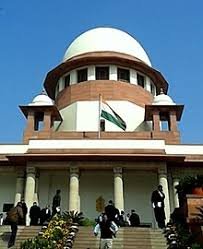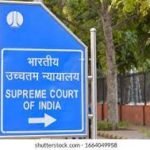The appellant in this case was the husband of the deceased, and their relationship was reportedly not harmonious. On 18 October 2004, at approximately 10:00 PM, the deceased’s mother-in-law entered their room and found the deceased holding the appellant, who was reportedly trying to “outstage” her. The mother-in-law intervened, rescuing the appellant and preventing him from leaving. The following day, around 9:00 AM on 19 October 2004, the deceased and her infant daughter (one-and-a-half years old) were found missing from the house. Later, the deceased and her infant daughter were discovered dead, having consumed an oleander seeds mixture, near a school where her elder daughter was studying. The deceased had visited the school to take her elder daughter away, but the teachers did not permit it due to the absence of the warden. The Trial Court convicted the appellant under Section 306 of the Indian Penal Code (IPC).
Law Involved The primary law involved in this judgment is Section 306 of the Indian Penal Code (IPC), which deals with abetment of suicide. Other sections initially involved or considered include Sections 498-A (cruelty by husband or relatives of husband), 304B (dowry death), and 34 (acts done by several persons in furtherance of common intention) of the IPC.
For a charge of abetment of suicide under Section 306 IPC, the prosecution must establish the element of “abetment”. Abetment, as defined in Section 107 of the IPC, can occur through:
Instigation: Inciting, provoking, or encouraging someone to do an act.
Conspiracy: Engaging in a conspiracy for the doing of an act.
Intentional Aid: Intentionally aiding, by an act or illegal omission, the doing of an act.
Crucially, the instigation or aid must be of such a nature that it is intended to push the victim to commit suicide. The mens rea (guilty mind) or criminal intent to instigate the commission of suicide is an essential ingredient.
Reasoning and Holding of the Judgment
Trial Court’s Decision: The Trial Court had convicted the appellant under Section 306 IPC, sentencing him to two years of rigorous imprisonment and a fine of Rs. 1,000.
High Court’s Reasoning and Decision:
The High Court observed that the appellant’s actions did not constitute abetment of suicide as defined under Section 107 IPC.
It reasoned that the actions of the appellant did not indicate an instigation for the deceased to commit suicide. The evidence related to “abetment of suicide” was found not to be “duly proved”.
The High Court emphasized that for abetment, there must be “active or direct steps” that lead to the commission of suicide immediately or proximately. Mere quarrels or ordinary domestic disputes do not amount to abetment of suicide unless they are so grave as to leave no option for the victim but to commit suicide.
The High Court noted that the deceased committed suicide the day after the quarrel, not immediately. This time gap, coupled with the deceased’s subsequent actions (going to the school and then to the nearby field), suggested that the appellant’s actions were not the proximate cause of the suicide.
Consequently, the High Court acquitted the appellant of the charge under Section 306 IPC.
However, the High Court maintained the conviction of the appellant under Sections 498-A and 34 IPC, sentencing him to three months of simple imprisonment and a fine of Rs. 2,000, in default to further simple imprisonment of one month.
Supreme Court’s (INSC 802) Reasoning and Holding:
The Supreme Court reiterated the powers of an appellate court, stating that it has the discretion to interfere with a judgment of acquittal and can enhance or reduce a sentence or even direct a re-trial. However, interference with an acquittal is only warranted if the finding is “perverse” or “wholly unreasonable”.
The Supreme Court scrutinized the High Court’s decision to acquit under Section 306 IPC. It agreed that the actions of the appellant did not constitute active or direct instigation for the deceased to commit suicide.
It found no evidence of the necessary mens rea (guilty intent) on the part of the appellant to instigate or abet suicide.
The Court held that quarrels or arguments alone, even if abusive, do not automatically amount to abetment of suicide. There must be an active role or direct act on the part of the accused that drives the deceased to commit suicide.
The facts indicated that the deceased’s actions following the quarrel, particularly the time gap and her subsequent movements (going to the school), meant that the appellant’s actions were not the immediate or proximate cause of her taking her own life.
Therefore, the Supreme Court found no “infirmity” in the High Court’s judgment of acquittal for the offence under Section 306 IPC and accordingly upheld the acquittal.
Regarding the conviction under Sections 354 and 448 IPC, the Supreme Court found the High Court’s reasoning to be appropriate, including the enhancement of the sentence.
The Supreme Court specifically stated that while hearing an appeal against acquittal, the appellate court cannot only affirm the conviction but must also go further and seek to enhance the sentence if the conviction is affirmed. In this instance, the High Court did affirm the conviction for 354/448 IPC and enhanced the sentence from what the Trial Court had given for 306 IPC (from 2 years RI to 3 months SI but with a higher fine and for a different section).
The Supreme Court effectively upheld the High Court’s decision in its entirety, meaning the appellant remained acquitted of abetment of suicide but was convicted and sentenced for other offence.
Nagarajan V. State Of Tamil Nadu
Supreme Court: 2025 INSC 802: (DoJ 04-06-2025)







